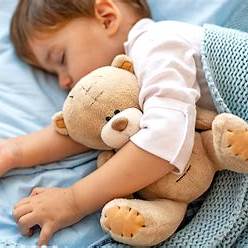Children with ADHD often struggle with sleep—from difficulty falling asleep to frequent night wakings and early morning restlessness. Unfortunately, lack of sleep can intensify ADHD symptoms like inattention, irritability, and impulsivity.
Establishing a calming and consistent sleep routine is one of the most impactful things you can do to support your child’s focus and emotional regulation. Here’s how to create a bedtime routine that truly works.
Why Sleep Is So Challenging for Children with ADHD
ADHD affects the brain’s ability to regulate alertness and transitions. Many children:
- Feel wide awake at bedtime
- Struggle to “shut off” their thoughts
- Are more sensitive to environmental disruptions (light, sound, temperature)
- Experience racing thoughts or restlessness
When sleep is consistently poor, the next day becomes even harder—for both child and parent.
1. Create a Consistent Bedtime and Wake Time
Stick to the same schedule daily—even on weekends:
- Aim for a set bedtime and wake-up time within 30 minutes of each other every day
- This helps regulate the body’s internal clock
Consistency reduces confusion and makes it easier for the brain to wind down at night.
2. Build a Calming Bedtime Routine
Establish a predictable, relaxing sequence each night:
- Take a warm bath or shower
- Brush teeth
- Read a calming story
- Dim the lights
- Play soft music or white noise
Repetition helps your child’s brain recognize it’s time to sleep. Keep the routine short (20–30 minutes) and soothing.
3. Eliminate Screens Before Bedtime
The blue light from screens interferes with melatonin, the body’s sleep hormone:
- Turn off all screens at least 1 hour before bed
- Replace screen time with calming activities like drawing, puzzles, or quiet play
Use screen filters or night modes if early shutdown isn’t possible.
4. Create a Sleep-Friendly Environment
The bedroom should be a peaceful, sleep-inducing space:
- Use blackout curtains to block light
- Keep the room cool (around 65–70°F / 18–21°C)
- Minimize noise or use a white noise machine
- Remove clutter and distractions
A clean, quiet, and consistent space supports deeper sleep.
5. Use Visual Bedtime Charts
Children with ADHD benefit from visual cues. A bedtime chart with pictures or simple steps might include:
- Bath
- Pajamas
- Brush teeth
- Story time
- Lights out
This promotes independence and reduces nightly reminders or power struggles.
6. Offer a Calming Object or Sensory Tool
Some children fall asleep better with:
- A weighted blanket (check with a professional first)
- A favorite stuffed animal
- A lavender-scented pillow
- A gentle sound machine or nightlight
These tools offer comfort and sensory support to ease the transition into sleep.
7. Limit Evening Sugar and Stimulants
Avoid giving sugary snacks or drinks with caffeine (sodas, chocolate) in the evening:
- Choose snacks with protein and complex carbs (like oatmeal or banana with peanut butter)
- Herbal teas like chamomile (caffeine-free and child-safe) may help relax the body
Stable blood sugar and no stimulants help the brain wind down naturally.
8. Be Patient and Consistent
It may take weeks for a new sleep routine to fully take effect. During this time:
- Stick to the routine even if results aren’t immediate
- Stay calm if your child resists bedtime—redirect rather than punish
- Reinforce with praise: “You followed all your steps tonight! That was awesome.”
Your calm consistency is key to building lasting habits.
9. Track Sleep Patterns
Use a journal or app to track:
- Bedtime and wake-up time
- Night wakings
- Any new habits introduced
This helps you notice patterns and adjust the routine when needed.
10. Talk to a Professional if Sleep Remains a Struggle
If your child:
- Regularly sleeps fewer than 6–7 hours
- Snores heavily or stops breathing during sleep
- Has frequent nightmares or sleepwalking
Consider talking to your pediatrician or a sleep specialist. Underlying issues like sleep apnea, anxiety, or sensory sensitivities may require further evaluation.
Final Thought: Rested Brains Learn Better
Helping your child get better sleep is a long-term investment in their emotional and cognitive health. A good night’s rest helps regulate energy, emotions, and focus—giving them the best possible foundation to learn, grow, and feel well each day.
With patience, structure, and support, your child can learn to embrace sleep as a safe, peaceful part of their routine.
